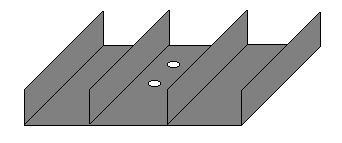

| When transistors
carry high currents they generate a lot of heat internally, which can destroy
the transistor.
A heat sink is
a way of removing this heat.
Often the case
of the transistor is internally connected to the collector.
|

| When components are being
soldered to printed circuits, heat from the iron can travel up the lead
and damage the component.
The heat shunt is clipped to the lead,and absorbs this heat protecting the component from damage. Having said that, most components today are well able to handle high temperatures without use of a shunt. There are a few special components which require use of a shunt. |